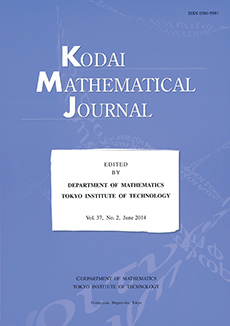Abstract
An afforested surface W := <P, (Tn)n$\in$N, (σn)n$\in$N>, N being the set of positive integers, is an open Riemann surface consisting of three ingredients: a hyperbolic Riemann surface P called a plantation, a sequence (Tn)n$\in$N of hyperbolic Riemann surfaces Tn each of which is called a tree, and a sequence (σn)n$\in$N of slits σn called the roots of Tn contained commonly in P and Tn which are mutually disjoint and not accumulating in P. Then the surface W is formed by foresting trees Tn on the plantation P at the roots for all n $\in$ N, or more precisely, by pasting surfaces Tn to P crosswise along slits σn for all n $\in$ N. Let ${\mathscr O}_s$ be the family of hyperbolic Riemann surfaces on which there are no nonzero singular harmonic functions. One might feel that any afforested surface W := <P, (Tn)n$\in$N, (σn)n$\in$N> belongs to the family ${\mathscr O}_s$ as far as its plantation P and all its trees Tn belong to ${\mathscr O}_s$. The aim of this paper is, contrary to this feeling, to maintain that this is not the case.
Citation
Mitsuru Nakai. Shigeo Segawa. "Existence of singular harmonic functions." Kodai Math. J. 33 (1) 99 - 115, March 2010. https://doi.org/10.2996/kmj/1270559160
Information





